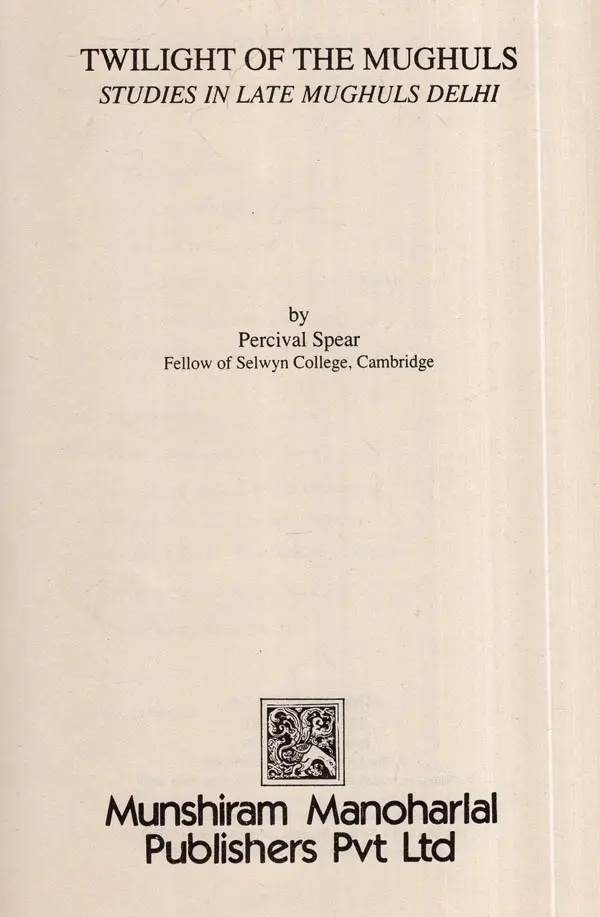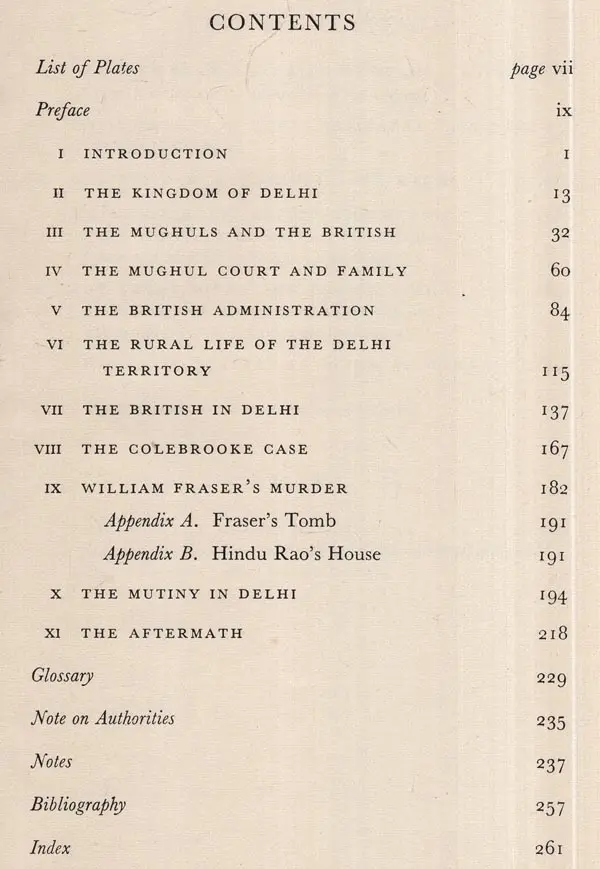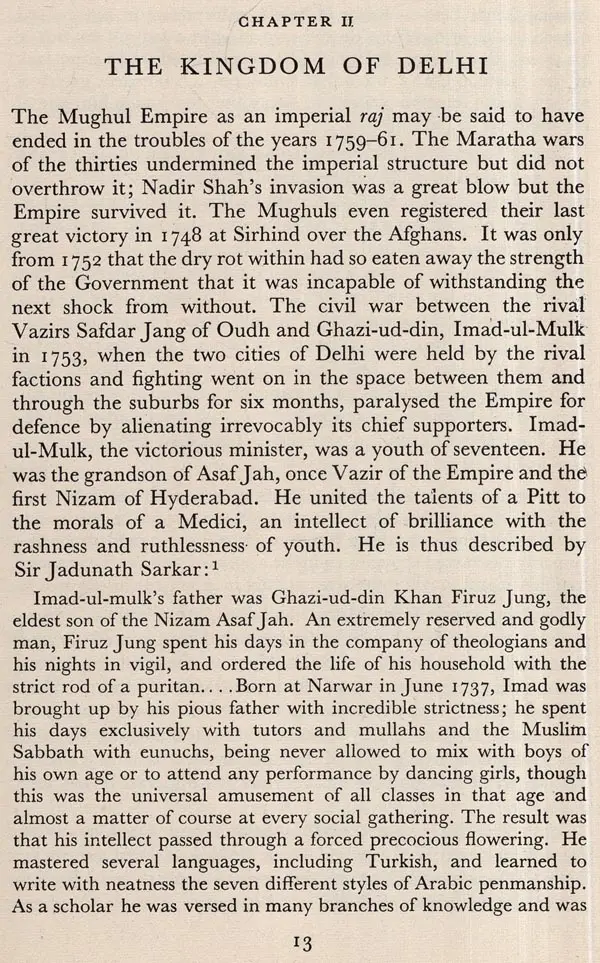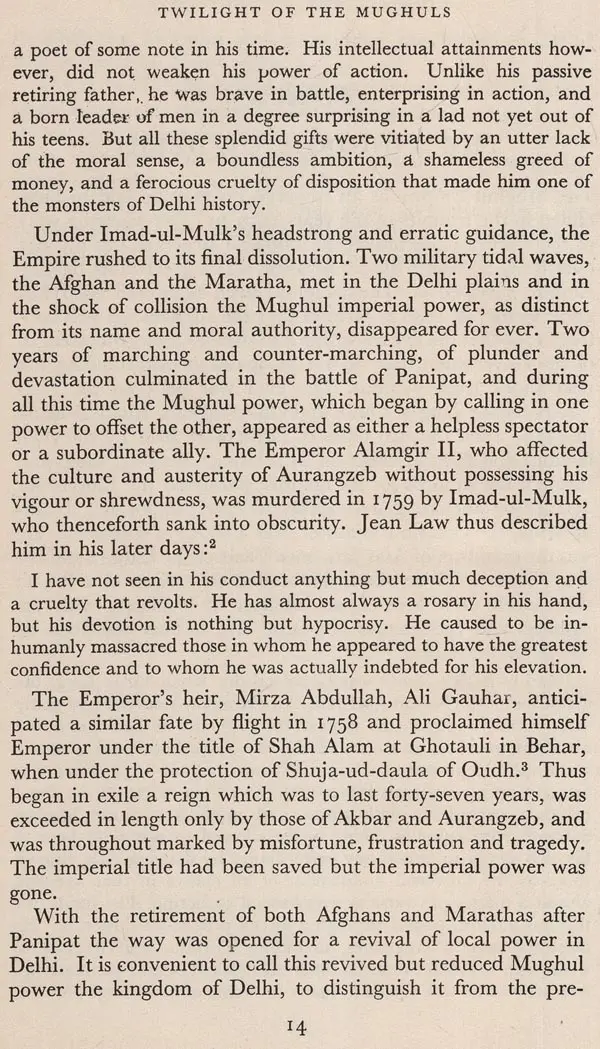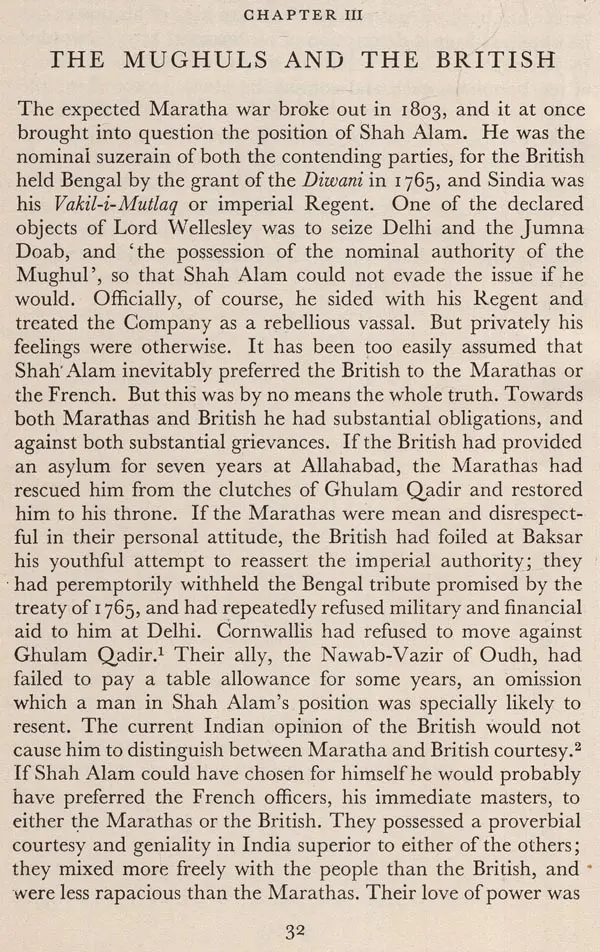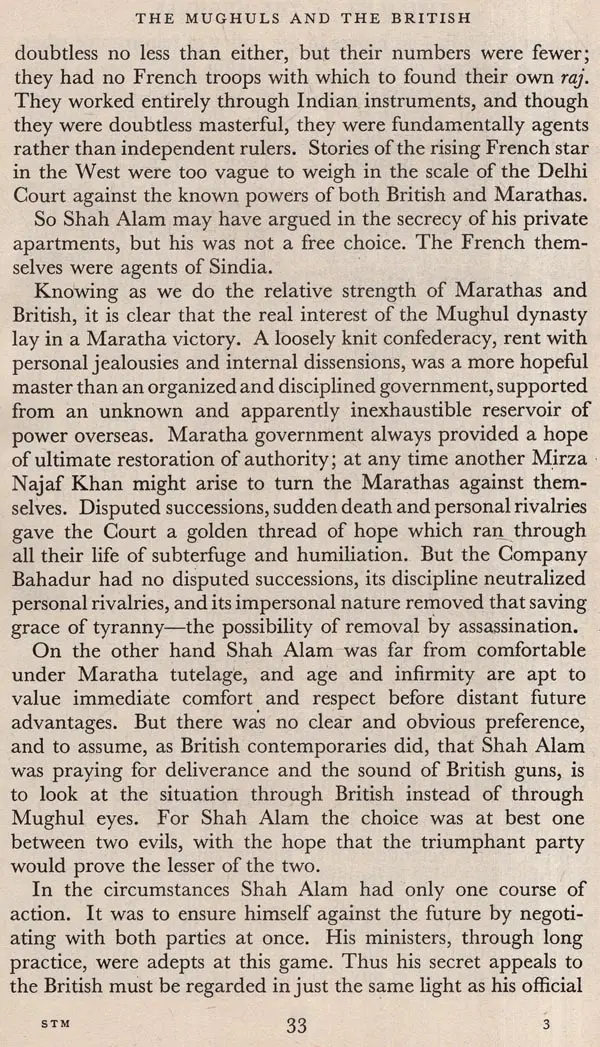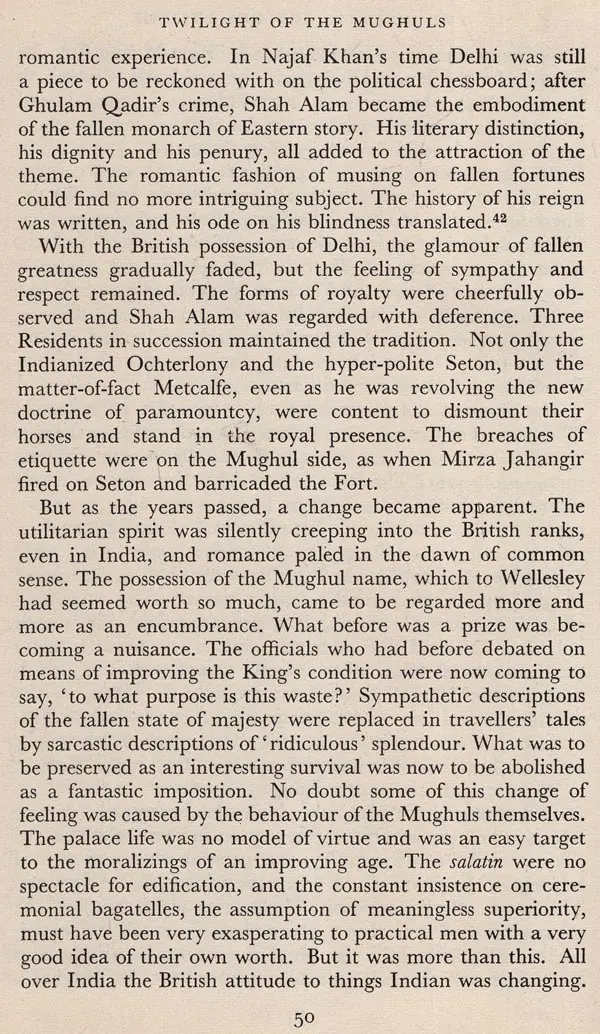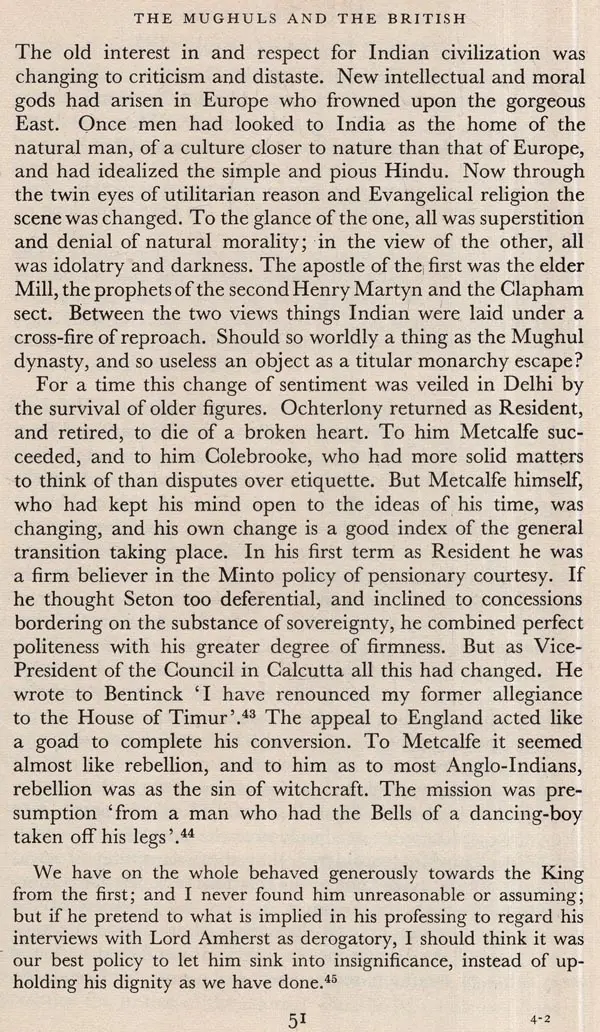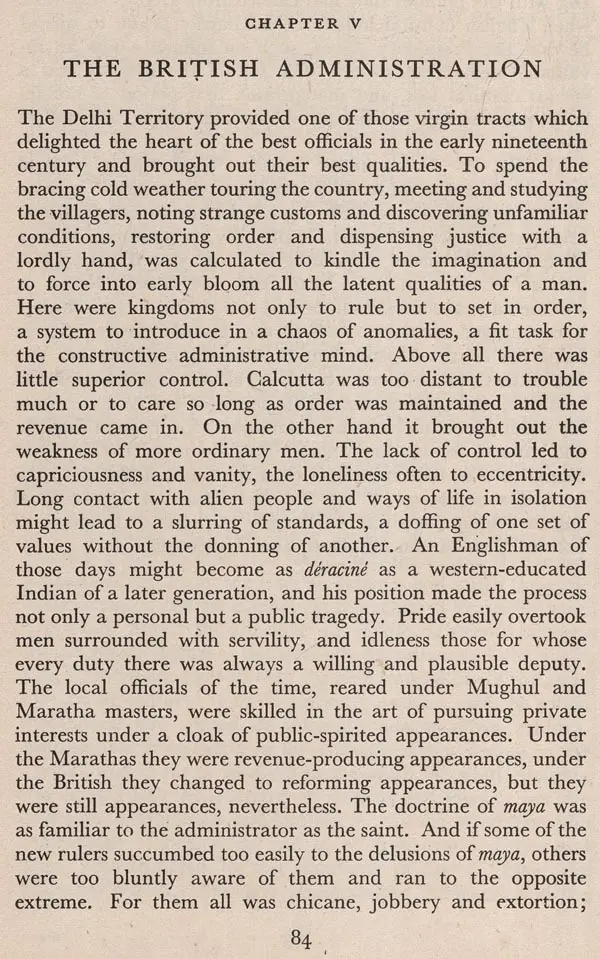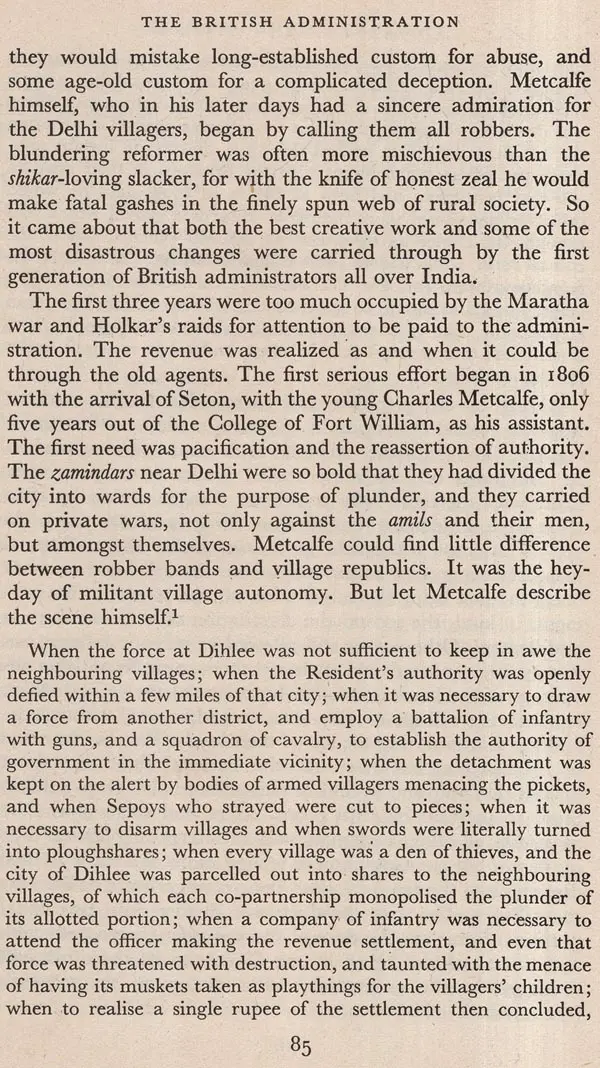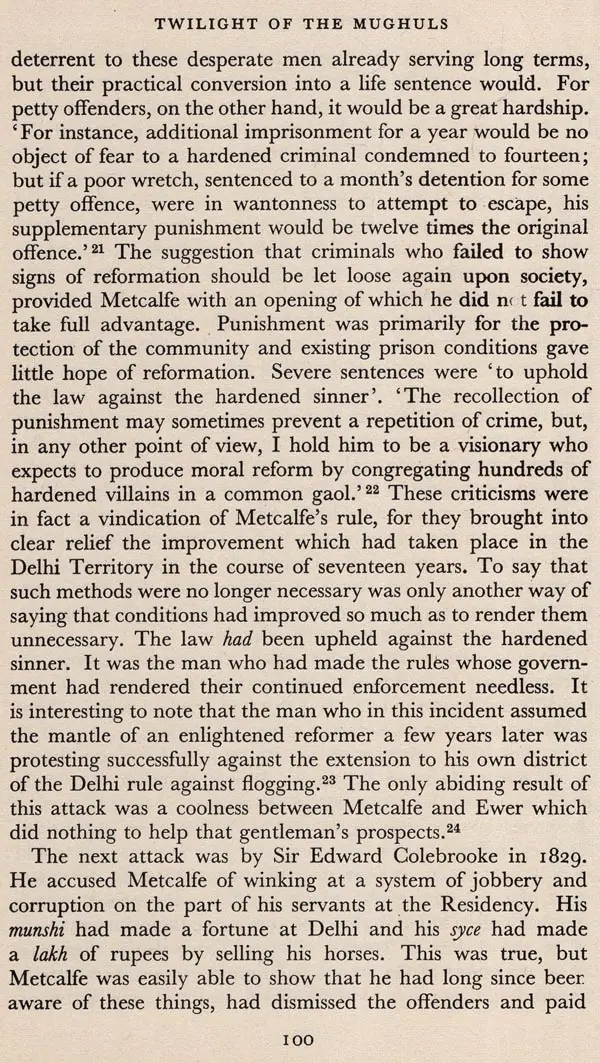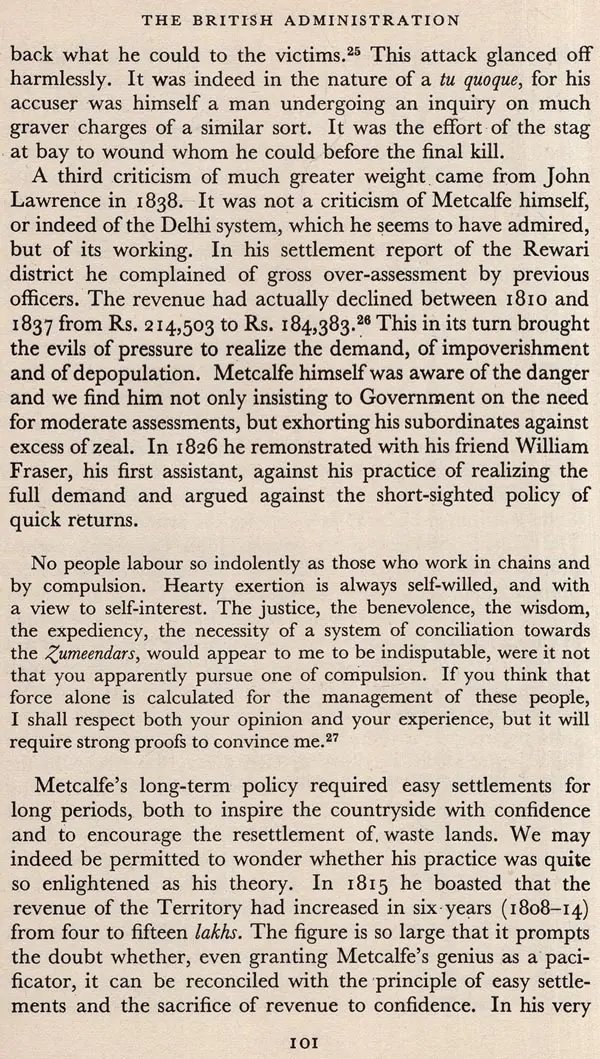
Twilight of the Mughuls - Studies in Late Mughul Delhi (An Old and Rare Book)
Book Specification
| Item Code: | UBF027 |
| Author: | Percival Spear |
| Publisher: | MUNSHIRAM MANOHARLAL PUBLISHERS PVT LTD |
| Language: | English |
| Edition: | 1991 |
| ISBN: | 8121505176 |
| Pages: | 270 |
| Cover: | HARDCOVER |
| Other Details | 8.50 X 5.50 inch |
| Weight | 490 gm |
Book Description
his book is a study of Delhi and its adjacent territory during the late Mughul and early British periods. It covers the period from the emergence of the 'Kingdon of Delhi' with the reces- sion of both Afghans and Marathas after the battle of Panipat in 1761, until the Mutiny in 1857.
The first section of the book is a sketch of the Kingdom of Delhi until the British conquest in 1803, special attention being paid to the period 1782-8 when the kingdom passed from a precarious independence to Maratha control. While secondary authorities have been largely used for this period, the object being to analyse and co-ordinate already available material, original sources have been used for the vital years 1782-88.
The second part of the book consists of a series of studies of the Delhi city and Territory under British administration from 1803-57. This part falls into three sections. The first deals with the relations of the British with the Mughul emperors or 'Kings of Delhi' and the internal life of the Mughul family. The second is a study of the British administration of the Delhi Territory and specially of the 'Metcalfe system'. This has been dealt with by Kaye and Thompson in their lives of Charles Metcalfe, but from a different point of view. The third deals with a number of separate topics-British life in Delhi, the Colebrooke case, the Fraser murder and finally the Mutiny and its aftermath in Delhi mainly from the Indian point of view.
Two hundred years ago Delhi had been a great and imperial city for a century, with anything between one and two million inhabitants. It was the largest and most renowned city, not only of India, but of all the East from Constantinople to Canton. Its Court was brilliant, its mosques and colleges numerous, and its literary and artistic fame as high as its political renown. Within fifty years its provinces vanished, its wealth was plundered, its Emperor was blinded, and the city shrank to be a provincial capital of less than two hundred thousand people. The greatness of the change is not appreciated because the magnitude of Mughul Delhi is not realized. The main steps in the decline, the sacks of Nadir Shah and Ahmad Shah Abdali, the civil wars of the 'omrahs' or nobles, the atrocities of Ghulam Qadir Khan, are well known. But the drama which accompanied these events, the ebb and flow of changing fortune, the alternating hopes and deepening gloom, are too often disregarded in the facile terms 'decadence', 'effete glory' and 'inevitable decline'. Because Delhi is great now, with its new-planned capital city, it is forgotten that it was ever great before; because the disorders which now occur are within the city itself the days are forgotten when every village was a walled fortress, when no one could travel without an escort, and when robbers picked off unwary travellers from behind the walls of decaying monuments. The Mutiny is commonly the only dramatic event connected with the history of Delhi; to the Delhi-wallah it is an isolated catastrophe not comparable to the disasters of the previous century.
**Contents and Sample Pages**
